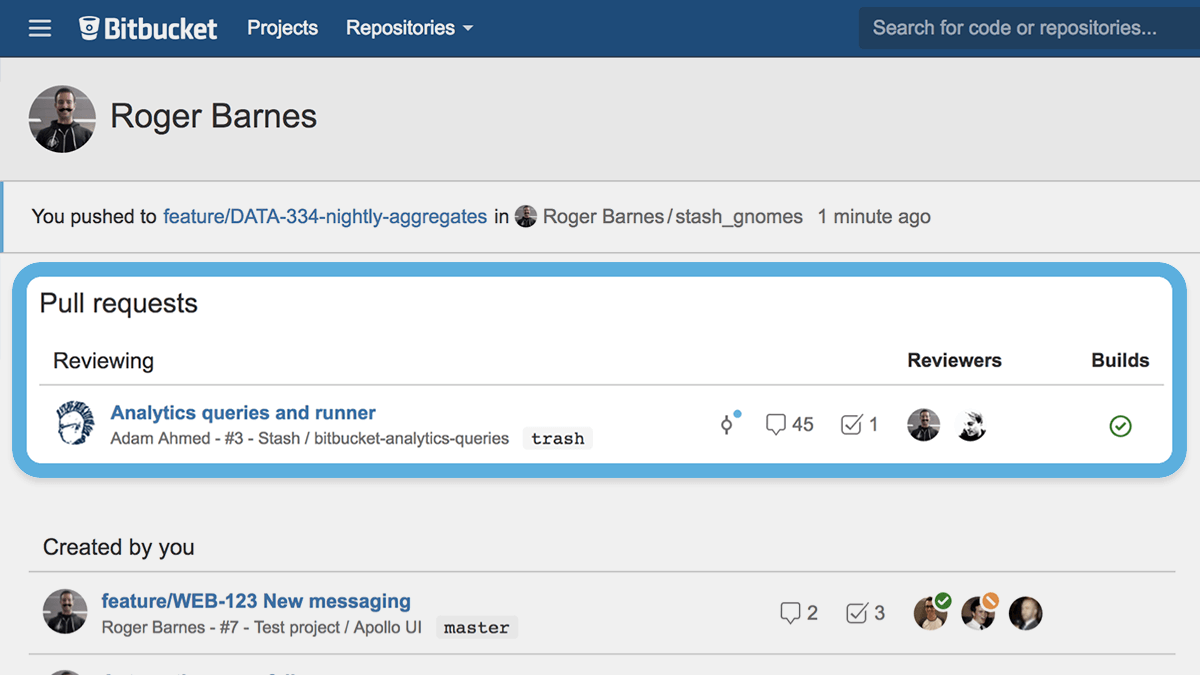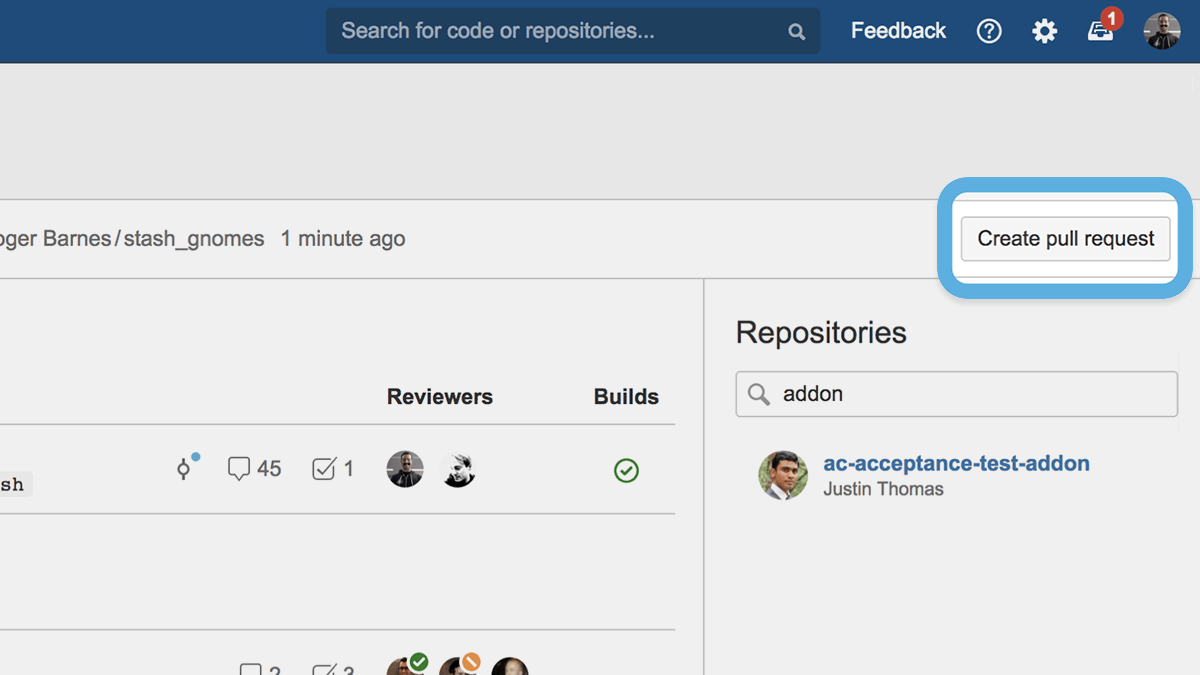As a developer on an agile team, the main thing that I can do to keep things moving fast is to make sure that I’m not a blocker. This means that I need to be continuously aware of my work in flight. To keep track of my work throughout the week – including the work of other team members – I try to have a routine in the morning to get my day going.
After that all-important first coffee, I focus on what’s in my queue for the day. I’ve found that email notifications can be a bit noisy, so instead of sifting through my inbox, I open my personal dashboard, which highlights all of my work in-progress in one place. I can see recent activity like pull requests that have been assigned to me, the status of my pull requests in review, and my recent pushes. This single view gives me the ability to act fast and spend time on what matters most: my work.
See relevant pull requests that are in review
Once I look at my work for the day on my personal dashboard, I have a good idea of what needs to get done; no more clicking around or searching through email notifications. All of the pull requests that need my attention are right in front of me, so that I can act fast. I can also see who else is reviewing the code, their approvals, comments, tasks, and whether there are any merge conflicts or build failures.
After I’ve reviewed a pull request, the dashboard knows when a change I’ve reviewed needs to be reviewed again, and as an author I can see which pull requests have new feedback needing my attention.

This single view on the progress of pull requests keeps the code review discussion going and helps me to keep work continually in-progress until done.
Create pull requests from your personal dashboard
Later in the day, and maybe after a second coffee, I try to focus on writing code. Personal dashboards help me focus on my work and make my workflow process easier, because I can fire off a pull request for review directly from the dashboard. To create a new pull request all I have to do is click on the “Create pull request” button next to my recent pushes.

Having this button on my dashboard is key. It gives me a quick glimpse into the progress of my own work and reminds me of what code needs to be reviewed. Also, I can easily keep the workflow going without searching through different views like the pull request list page, because all of the information on my recent pushes is in one place.
Search repositories in the context of your work
While I’m able to make decisions quickly and take actions faster – because my personal dashboard aggregates code review and work in-progress information – it also helps me navigate repositories quickly. In the right hand side of the dashboard is a repository search bar plus a dropdown that includes recently visited repositories. Having repository search in the same view as my pull requests gives me the option to search in the context of my work instead of using quick search or the project and repository lists to navigate. I can also use it to search across all repositories.

This helps me stay focused on the work at hand, because everything I need to do is in once place and one click away. So even though I start my day looking at my dashboard, I refer back to it throughout.
If being organized is important to you, give Bitbucket Server a try. But first, more coffee (twitch).
Check out the release notes for more information on these new features and the other improvements we’ve made in 4.10.
In case you missed it
We’re constantly improving our pull request experience, adding new features, and more. Check out to see what’s new in Bitbucket Server:
- Code search shipped in Bitbucket Server 4.6. You can now search for code directly in the search bar, which includes searching code across all of your projects and repositories. Or you can get more granular to search for code in a specific project or repository. And you have the option to use search operators to get more precise search results and can search for code on the language it’s written in.
- Commit-level review shipped in Bitbucket Server 4.8 to provide per-commit diff views and commenting within pull requests to help reviewers do just that – review individual commits added to a pull request. Highlighting changes at this granular level makes the reviewing experience better for every member on the team and will result in faster pull request turnarounds.
- New merge strategies shipped in Bitbucket Server 4.9. Now a repo admin can define the default merge strategy and specify what alternative strategies are allowed for selection at merge time.
- Bitbucket Data Center now offers source code collaboration for teams at the 25 user tier. Learn about what features you get when you switch to Bitbucket Data Center including smart mirroring, Git LFS, disaster recovery and more.
- For an entire roll-up of features check out our updated documentation.